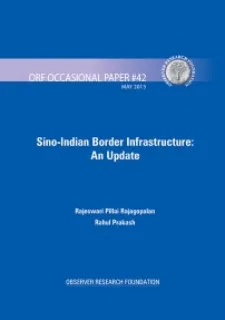China's inventory of tanks has not been considered seriously in the Indian context given the mountainous terrain of the border region. However, it is a factor, particularly in the Ladakh sector, where once the mountains are crossed the region presents itself as a high altitude desert.Moreover, China's artillery with long-distance heavy calibre guns capable of firing up to 40 km-plus are of significance in this context.
Compared to China's augmented capacities to apply military power in the border regions, the Indian leadership's approach—political, military and civilian bureaucracy—comes across as narrow and naïve. This approach, guided by the argument that improvement in the border infrastructure would facilitate the Chinese, has however undergone a change in the recent past.
In 2010, Defence Minister A.K. Antony while addressing a function organised by the Border Roads Organisation (BRO) said, “Earlier the thinking was that inaccessibility in far-flung areas would be a deterrent to the enemies.” He acknowledged that this was an “incorrect approach” and stated that the government has decided to upgrade roads, tunnels and airfields in the border areas.13 Border Road Organisation Director Lt. Gen. A.K. Nanda, speaking in a similar vein, stated that border infrastructure development was not undertaken earlier “by design”, adding, “our approach has changed and we are building on our capacity, modern equipment and workforce”.14
Whatever the logic, an underdeveloped border region has serious consequences for India—the primary one being the inability to deploy forces on time. This could complicate India's options and lead to an unfavourable outcome, particularly in the initial stages of a conflict.

 PDF Download
PDF Download

















 PREV
PREV



